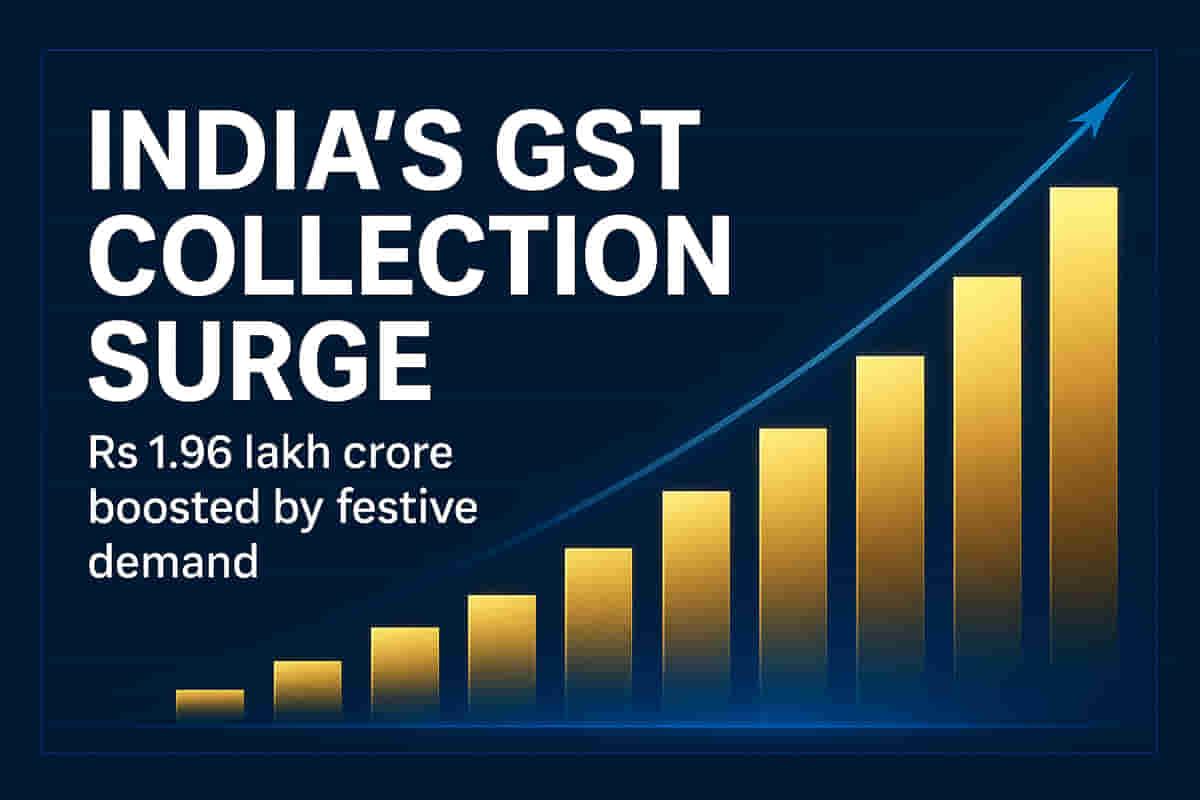India's GST Collections Rise 4.6% to Rs 1.96 Lakh Crore in October Amid Festive Demand
Economy
|
1st November 2025, 10:14 AM

▶
Short Description :
Detailed Coverage :
India's Gross Goods and Services Tax (GST) collections for October stood at Rs 1.96 lakh crore, marking a 4.6% increase compared to Rs 1.87 lakh crore collected in October of the previous year. This growth was primarily driven by robust festive season demand, with many consumers delaying purchases until after anticipated GST rate cuts were implemented on September 22nd. These reductions affected 375 items, from kitchen essentials to electronics and automobiles, coinciding with the start of the Navratri festival.
The October collections reflect a 4.6% year-on-year growth, which is lower than the average 9% growth observed in earlier months of the year. Domestic revenue, indicating local sales, rose by 2% to Rs 1.45 lakh crore, while GST collected from imports saw a substantial surge of 13% to Rs 50,884 crore. GST refunds increased significantly by 39.6% to Rs 26,934 crore, resulting in a net GST revenue of Rs 1.69 lakh crore for October, showing a modest 0.2% annual rise.
Experts view the higher gross GST collections as a positive indicator of strong festive demand and businesses adapting to the rate structure. However, some note a muted momentum in September due to rate rationalization effects and deferred spending, with expectations of stronger numbers in subsequent months. The government's commitment to resolving exporter issues and addressing inverted duty structures is considered a confidence booster for investors. Growth in collections from various states also signifies holistic economic development and formalisation across India.
Impact This news indicates sustained economic activity and consumption, especially during a key festive period, which is generally positive for the Indian stock market. The moderation in year-on-year growth compared to earlier months might be a point of observation for investors, but the overall collection signifies a healthy economy. Rating: 7/10
Difficult Terms: Gross GST Collections: The total amount of Goods and Services Tax collected by the government before accounting for refunds or other adjustments. Year-on-year: A comparison of a metric from a specific period (e.g., October) with the same period in the previous year (e.g., October of the prior year). Festive Demand: An increase in consumer spending driven by celebrations and festivals. Pent-up Consumption: Consumer spending that was postponed and then occurs in a concentrated period. GST Rate Cuts: A reduction in the tax percentage applied to certain goods and services under the GST regime. Navratri: A significant nine-night Hindu festival celebrated in autumn. Domestic Revenue: Tax revenue generated from sales and services within India. Imports: Goods and services brought into India from other countries. GST Refunds: Amounts of GST paid back to taxpayers who have overpaid or are eligible for credits. Net GST Revenue: The total GST collected minus the total GST refunded. Rate Rationalisation: The process of adjusting, simplifying, or aligning tax rates to make them more efficient or logical. Deferred Consumer Spending: Consumers delaying their purchase decisions. Seasonal Buoyancy: A predictable increase in economic activity or sales during specific times of the year, often linked to festivals or seasons. Working Capital Issues: Financial challenges businesses face in managing their day-to-day operational funds. Inverted Duty Structure: A tax anomaly where the tax on inputs (raw materials) is higher than the tax on the finished product, often leading to refund claims. Formalisation: The process of bringing informal economic activities into the official, regulated sector of the economy. GST Framework: The comprehensive system of rules, regulations, and procedures governing the Goods and Services Tax.